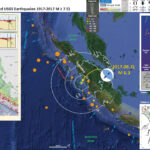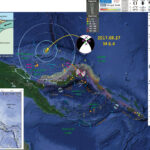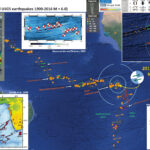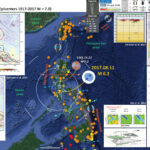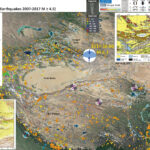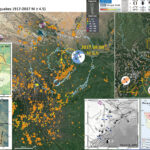We just had an earthquake in the Mentawai region of the Sunda subduction zone offshore of Sumatra. Here is the USGS website for this M 6.3 earthquake. Based upon the hypocentral depth and the current estimate of the location of…
#Earthquake Report: North Bismarck plate
Well, what have we here? We have an interesting crustal earthquake in the North Bismarck plate. Why is it interesting? This is an interesting earthquake because of its orientation and mechanism. This region of the world is one of the…
Earthquake Report: Mid Atlantic Ridge (Chain fracture zone)
If there was an earthquake in the middle of the ocean, and nobody felt it… would it still be an earthquake? Maybe we need to get the Karl Popper out for a good read… There was a good sized shaker…
Earthquake Report: Bengkulu (Sumatra)!
Last night (my time) while I was tending to other business, there was an earthquake along the Sunda Megathrust. Here is the USGS website for this M 6.4 earthquake. This M 6.4 earthquake happened down-dip (“deeper than”) along the megathrust…
Earthquake Report: Philippines!
There was a deep focus earthquake in the Philippines today. This shaker was located near the city of Manila (I live in Manila. Manila, California). The hypocenter was quite deep (168 km) so (a) had lesser shaking due to the…
Earthquake Report: China #2!
We had another earthquake in China today! This one along the northern Tian Shan Mountains, on the other side of the orogenic wedge from the earthquakes from earlier today. This M 6.3 earthquake is along a thrust fault, while the…
Earthquake Report: China!
This morning (my time) there was a shallow earthquake in western China, near a region that was shocked by an M 7.9 earthquake in 2008 (the “Wenchuan Earthquake”). Here is the USGS website for this M 6.5 earthquake. Below is…

